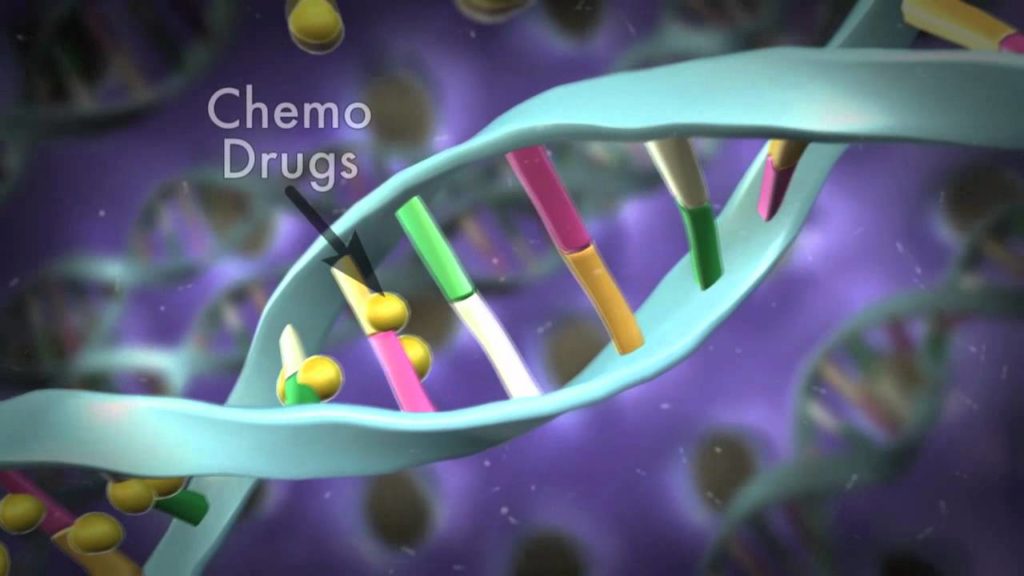“Targeted radiotherapy ‘cures’ prostate cancer that kills thousands,” reports The Times.
The news is based on a UK study of the use of high-precision radiotherapy to treat men with advanced localised prostate cancer.
Researchers wanted to see if they could safely target cancer cells that had spread outside the prostate to nearby lymph nodes without damaging nearby healthy cells, and reduce treatment side effects.
Prostate cancer is the most common cancer in men – more than 47,000 cases are diagnosed in the UK every year.
Some 447 men with locally advanced disease took part in the 10-year study, carried out by the Institute of Cancer Research and the Royal Marsden NHS Foundation Trust.
The high-tech radiotherapy, called pelvic lymph node intensity modulated radiation therapy (PLN-IMRT), can modify the shape and strength of its beams to target cancerous cells more effectively.
The main aim of the study was to look at the side effects of the treatment, specifically on the bladder and bowels.
Five years after receiving treatment, up to 71% of patients were alive and disease-free. Only 8-16% of patients experienced bowel or bladder complications.
This is promising research that suggests PLN-IMRT should be studied further. Later-stage randomised controlled trials would be the best way of confirming the safety and potential benefit of this treatment for men with advanced localised prostate cancer and seeing how it compares with other treatment approaches.
Where did the story come from?
The study was carried out by researchers from the Institute of Cancer Research and the Royal Marsden NHS Foundation Trust, both in London. It was funded by Cancer Research UK, the Department of Health, the National Institute for Health Research (NIHR) Cancer Research Network and the NHS.
It was published in the peer-reviewed International Journal of Radiation Oncology Biology Physics and is free to read online.
The media headlines talking of a “cure” are premature at this point. This early-stage study focused on the potential harms of PLN-IMRT.
While the number of men surviving without disease progression was an exciting finding that should prompt further research, it’s important to realise that the present study wasn’t designed to give us definitive answers on whether the treatment works or how it should be delivered.
What kind of research was this?
This was a phase I and phase II trial designed to see whether PLN-IMRT was a feasible treatment to use in men with advanced localised prostate cancer and to look at its side effects.
Locally advanced prostate cancer means the cancer has spread outside of the prostate to the nearby lymph nodes and tissues, such as the semen-carrying seminal vesicles.
There are a number of treatment options, one of which is radiotherapy – but this is often targeted at the prostate and seminal vesicles rather than directly at the lymph nodes.
This is an early-stage trial, so the participants were not randomised to the treatment they received and there was no comparison group receiving a different treatment.
This stage of trial is important for looking at side effects and seeing if the treatment approach is feasible, but it can’t provide good evidence for how effective the treatment is – that requires later-stage trials.
What did the research involve?
The researchers recruited 447 men with advanced localised prostate cancer. The men received radiotherapy to the prostate as well as to the prostate lymph nodes in one of five different dosage patterns.
The dosage pattern each person received was determined by the order in which they entered the study, rather than being allocated at random.
The dosages were:
group 1: 70-74 gray units of radiation (Gy) to the prostate and 50Gy to the prostate lymph nodes over 35-37 sessions
group 2: as group 1 but with 55Gy to the prostate lymph nodes
group 3: as group 1 but with 60Gy to the prostate lymph nodes
group 4: 60Gy to the prostate and 47Gy to the prostate lymph nodes, spread across 20 sessions over the course of four weeks
group 5: as group 4 but across 20 sessions over five weeks
Everyone in the study also received long-course androgen-deprivation therapy (the male hormone, androgen, helps the cancer to grow).
Men were not allowed to participate in the study if they were unsuitable for radical radiation therapy, or had a history of either pelvic surgery or inflammatory bowel disease.
The main aim was to look at side effects of the treatment, particularly toxic effects on the bladder and bowel within two years of treatment.
The researchers also got an indication of how effective the treatment was by measuring survival rates as the study progressed and how many men could be considered to be free of prostate cancer.
However, it should be noted that, as this wasn’t a randomised trial, the men in each treatment group were not necessarily directly comparable in terms of their risk factors at the start of the study.
What were the basic results?
The researchers found that acute bowel toxicity peaked between six and eight weeks after treatment in groups 1, 2 and 3, but it occurred earlier in group 4 (in weeks four to five) and group 5 (weeks five to six). Most cases of bladder toxicity occurred in the first few weeks following treatment.
Rates of both bowel and bladder toxicity stabilised over time and were similar in all groups 18 weeks after treatment.
The overall toxicity rates per group at two years after treatment were as follows:
group 1: bowel 8.3%, bladder 4.2%
group 2: bowel 8.9%, bladder 5.9%
group 3: bowel 13.2%, bladder 2.9%
group 4: bowel 16.4%, bladder 4.8%
group 5: bowel 12.2%, bladder 7.3%
Disease progression occurred in 169 of 426 men (40%). The disease-free survival and overall survival rates were:
group 1 (26 people allocated): 38% disease-free, 76% survival
group 2 (59): 61% disease-free, 88% survival
group 3 (157): 70% disease-free, 92% survival
group 4 (70): 80% disease-free, 97% survival
group 5 (135): 78% disease-free, 95% survival
How did the researchers interpret the results?
The researchers described the bladder- and bowel-related toxicity rates of the treatment to be “acceptable” both in the short and longer term. They described the long-term disease-free survival of some people in the study as being consistent with other research on the same type of treatment.
Conclusion
This study shows some promising results for targeted pelvic lymph node radiotherapy for men with advanced localised prostate cancer.
However, these results can only be treated as preliminary findings for now. This was an early-stage trial that aimed to investigate whether the treatment approach is safe and to get an idea of what doses may be suitable for assessment in further trials. Although it can give an indication of effectiveness, this was not the main aim of the study.
Men were not randomised to a treatment group, which means there may have been some differences in the cancers or patient characteristics of men who received the different radiation dosages. This could, in turn, have impacted how effective the treatment was and makes it hard to know at this stage what the optimal approach to delivering this treatment would be – which dose is the best, for example.
All men in the study also received some kind of pelvic lymph node radiotherapy, which means it’s not possible to say how effective PLN-IMRT is compared with more conventional treatment approaches.
This research gives us a potential new treatment to investigate for men with locally advanced prostate cancer. Further trials looking more precisely at the effectiveness of this treatment are already in progress.
However, it will be some time before it’s known whether this could become a standard treatment option in the future.




